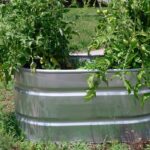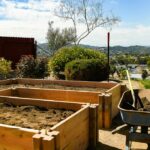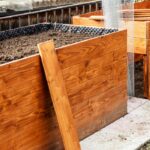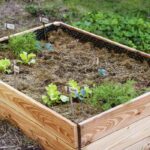Planting in raised garden beds is really exciting since you can grow nearly everything in them, provided they have the right conditions. And they have many benefits, too—they maximize the growing space, reduce the need for bending, and help ward off pests.
When deciding what to plant in raised beds, you need to consider the amount of sunlight and water the bed gets, the soil type, nutrition, soil depth, and the kind of plant. You can grow fruits, vegetables, herbs, and flowers in a raised bed, but avoid planting crops that take up lots of space.
You can also design them in many different ways using materials like brick, stone, metal, and wood. But the real question is, what should you plant in it? So let’s see how you can decide that and go through some fruits, vegetables, and herbs that are ideal to grow in them.
How to Decide on What to Plant in Your Raised Beds

While there are numerous things you can grow in a raised bed, you need to remember a few things when choosing what to plant.
Sun
The amount of light your raised bed gets every day is one of the most critical factors determining the kinds of plants you can grow. This is important to keep in mind when choosing a location.
You need at least 6 hours of sunlight daily for most vegetables, such as squash, peppers, and tomatoes, fruits like strawberries and melons, and herbs like lavender, rosemary, and basil. Meanwhile, in shady areas, you can grow ornamental plants like impatiens, caladiums, ferns, and hostas.
Water
When it comes to raised beds, you should plant crops that need almost the same amount of water. For example, if you plant tomatoes (that need lots of water) with agave (that thrives best in dry soil), one of them will definitely suffer.
Water-loving plants ideal for growing in raised garden beds include monkshood, sedges, and cardinal flowers. Meanwhile, prairie plants like big bluestem and false indigo, succulents like echeverias and sedums, and Mediterranean herbs like lavender and rosemary thrive in dry soil.
Soil and Nutrition
If you use high-quality soil in your raised bed and regularly give it the right plant food, you can grow nearly everything, ranging from eggplants and strawberries to purple coneflowers and zinnias.
Depth of Soil
The soil depth also determines the kind of plants you can grow. Most plants require a minimum of 12 inches to grow well, but plants like lettuce and flowers such as dwarf marigolds, sweet alyssum, and pansies can also grow in 6 inches of soil.
Meanwhile, most vegetables (including eggplants, peppers, and tomatoes) and herbs thrive in at least 20 inches of soil.
Type of Plant
Perennial plants last for a few seasons and return every year on their own. A few perennials that thrive in raised beds include hostas, raspberries, rhubarb, oregano, daylilies, and lavender. So if you plant these, they will occupy the space for a while.
What are the Best Fruits and Vegetables for Raised Beds?
Lots of fruits and vegetables thrive in raised beds. Here are some of our favorites:
Eggplants & Peppers
Both of these require heavy nutrients and thrive well in warm soil. Planting them in raised beds makes it easier to provide them with the right amount of water and nutrients.
Celery
Celery is a finicky plant that needs lots of moisture, nutrient-rich soil, and cool temperatures. It also has a long growing season, making it suitable for planting in raised beds. Plus, root nematodes and aphids are kept at bay.
Radishes & Beets
Root vegetables like radishes and beet also thrive in the beds’ loose soil, and they grow pretty well when they don’t have to compete with weeds or are not hindered by rocky soil. Plus, you can plant them successively since they tend to mature quickly.
Swiss Chard & Kale
Both of these are late-season crops and prevent the soil from becoming compact. They can thrive in lower temperatures, and you can cover them with cold frames or hoop houses to prolong their growing season so you can get a fall/winter harvest.
Leafy Greens
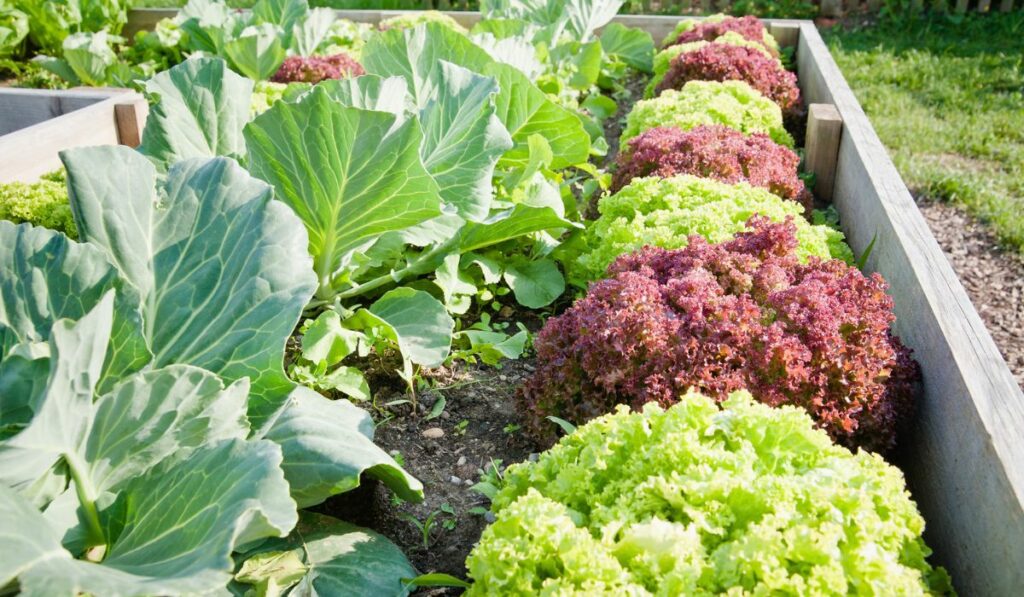
Spinach, lettuce, and mixed greens do well in the raised beds’ well-draining and warm soil. You can plant them earlier in the year and enjoy the harvest throughout winter by providing the proper protection.
Brassicas
Brassicas like arugula, cabbage, cauliflower, broccoli, and Brussels sprouts are great for first-round early crops. They grow well in hot temperatures and regulated soil temperatures. Raised beds keep the soil warm, which can help extend the season for early and late-season crops.
Tomatoes
Tomatoes thrive by extending their roots deep into the soil. They love sunny conditions and grow tall, so you should plant them toward the back of the garden bed.
Melons
You can grow all kinds of juicy melons in the well-drained, warm, balanced, and nutrient-rich soil of raised beds. You can let these vining plant spill over the sides or train them to climb structures like trellises to maximize space.
Carrots
Carrots are another great option for raised beds. The well-draining, loose soil in raised beds allows carrots to proliferate. Plus, since their fruit is under the soil and grows closer to the ground, you can plant them under taller plants.
Cucumbers
Cucumbers also do well in raised beds. However, it would be best to let them cascade over the sides of beds or up trellises to maximize space.
Potatoes
Planting potatoes in well-draining soil prevents rot, while loose soil ensures tubers form fully without being hindered by rocks and dense soil.
Strawberries
Strawberries grow well in warm soil with plenty of sunlight, making them an excellent option for raised beds. The beds also help protect the plants from slugs that feed on the succulent and juicy fruits.
Zucchini & squash
Large vegetables such as zucchini, squash, and bush varieties are also great options to plant in raised beds. Fast-growing vining plants can be allowed to flow over the edges or trained to climb over trellises.
What are the Best Flowers and Herbs for Raised Beds?

In addition to fruits and vegetables, you can also grow flowers and herbs in raised beds. Most are good companion plants and draw beneficial pollinators to the raised beds to protect them.
Generally, you should choose herbs with a shallow root system to plant in raised beds. These include licorice, rosemary, motherwort, oregano, lemongrass, dill, chamomile, sage, cumin, mint, basil, chives, parsley, etc.
You can also grow flowers in raised beds. In addition to providing beautiful and pleasant-smelling flowers, they also offer numerous other benefits. Some of the flowers you can grow include:
Marigolds
Marigolds are a good option for raised beds. They’re edible and make a good companion plant. In addition, they keep away harmful nematodes and attract beneficial pollinators like bees.
Borage
Like marigolds, borages are also a great option. The flower is edible, and since it’s self-seeding, growing is pretty straightforward. However, it also attracts birds and bees and traps sap-sucking insects. Plus, the roots break up and aerate the soil.
Nasturtiums
When nasturtiums bloom, they attract many beneficial bugs, pollinators, and even pests to keep them away from other crops. They’re also great companion plants since they cover the soil, retain moisture, and suppress weeds.
Calendula
Calendula looks similar to marigolds and attracts pollinators, including bees and butterflies. But, like other flowers on this list, it also traps pests like aphids. Plus, its thick and fibrous roots protect the soil.
Sunflowers
There are numerous benefits of sunflowers. They give climbing support to other plants and provide edible seeds. However, you need to be careful since they can hinder the growth of some nearby plants, like potatoes.
Winter-Flowering Shrubs
These are great for raised garden beds and add a pop of color in the bleak winter months. Some great winter-flowering shrubs include hamamelis, mahonia, sarcococca, Viburnum farreri, Viburnum Tinus, etc.
Lavender
Lavender loves free-draining, sunny conditions and is a great companion plant for vegetables with similar needs. It grows pretty well near Mediterranean herbs like asparagus. And it not only insects pollinators and beneficial insects, but it also has a pleasant smell.
Cosmos
Another great companion plant is cosmos. It’s easy to take care of and has a long growing season. And since it’s wildlife-friendly, it attracts beneficial insects, including those that eat sap-sucking bugs.
Sweet Peas
Even though these flowers aren’t edible, different garden creatures enjoy them. They also attract pollinators and are a great option to plant with peas, beans, and other trellises-climbing plants.
Phacelia
These beautiful purple-blue flowers are a good companion crop, attract beneficial bugs, bees, and hoverflies, create a great soil cover, and use their fern-like foliage to choke harmful weeds. The plant’s extensive root system also improves the soil structure.
Lupins
Lupins are nitrogen-fixing flowers that are useful for crop rotation. They’re also bee-friendly and attract many beneficial insects and pollinators.
Clover
Another nitrogen-fixing plant that you can use to maintain your raised beds’ fertility is clovers. It’s also a good companion plant that works with many common annuals. Plus, it reduces pesky weeds and moisture loss.
What Plants Work Well Together in Raised Beds?
Pairing plants with one another in a raised bed is mutually beneficial and keeps pests at bay, attracts beneficial pollinators, and boosts plant growth. Similarly, tall plants can provide protection and shade to crops that grow well in partial sun.
However, not all crops should be planted in the same bed. When deciding what to plant next, make sure you keep the following things in mind:
- Planting lavender near fruit crops can attract pollinators.
- Basil helps improve the flavor of tomatoes and repels mosquitos.
- Flowers like zinnias, sunflowers, marigolds, and nasturtiums repel harmful insects.
- Marigolds keep harmful insects away, while cosmos and caraway attract pest-eating insects that eat fruit-eating insects like mites and aphids that often attack strawberries.
- Thyme keeps away many parasitic worms that can destroy strawberry plants.
- Mint keeps cabbage moths and flea beetles away.
- Never plant sage with cucumbers.
- Carrots can be grown with chives but not with dill, but the latter is beneficial for cabbage.
What Plants Should Not Be Planted in a Raised Bed?
While there are many things you can grow in a raised bed, not all plants should be grown in them. Some are too large and make harvesting tricky, especially since they’ll already be a few feet off the ground, while others take up too much space.
Every square foot in a raised bed is essential, so there’s no point in planting something like rhubarb that takes up quite a significant amount of space per plant. Instead, you can utilize the space better by planting several herbs, kale, and tomatoes in the same area.
Similarly, some plants take quite a while to grow in raised beds. For instance, it takes up to three years for asparagus to yield the first crop, and it lives for more than 20 years. So if you plant something like this, you can forget about growing something else as the season changes.
In addition to rhubarb and asparagus, other plants you should avoid growing in raised beds include:
- Artichokes
- Rice
- Wheat
- Corn
- Watermelon
- Berries
- Cauliflower
- Yarrow

